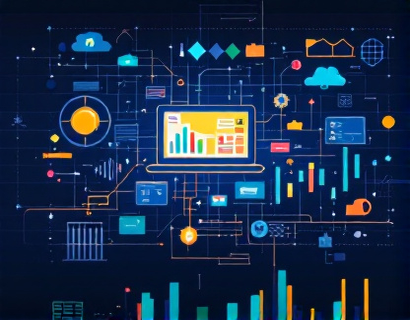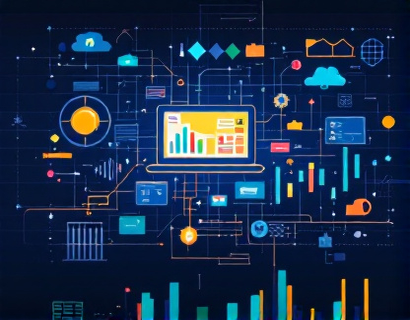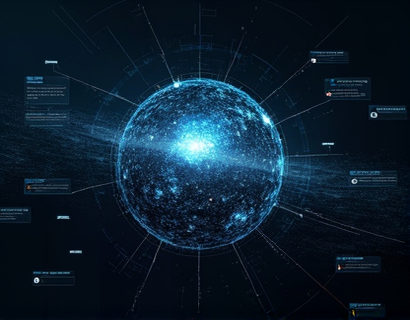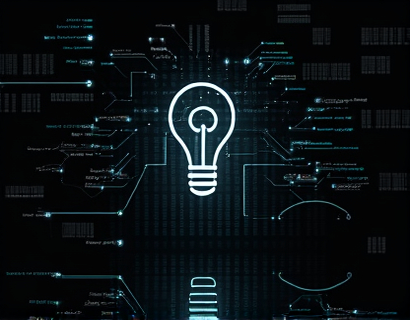Maximize Your Multi-Channel Announcements: A Strategic Guide for Businesses and Individuals
In today's fast-paced digital landscape, effective communication is crucial for businesses and individuals aiming to stand out and connect with their audience. Multi-channel announcements offer a powerful way to reach a broader audience, but managing these announcements across various platforms can be challenging. This comprehensive guide provides expert strategies to streamline your publishing process and enhance message visibility, ensuring maximum reach and engagement. By adopting a user-friendly approach, this guide is tailored for businesses and individuals seeking robust multi-channel solutions to optimize their communication strategy.
Understanding Multi-Channel Communication
Multi-channel communication involves using multiple platforms to disseminate information to your audience. This can include social media, email newsletters, websites, blogs, and more. Each channel has its unique audience and engagement dynamics, making it essential to tailor your messages accordingly. The key to successful multi-channel communication lies in consistency, clarity, and relevance across all platforms. By ensuring your message is cohesive and aligned with your brand's voice, you can build trust and credibility with your audience.
Benefits of Multi-Channel Announcements
Engaging your audience through multiple channels offers several advantages. Firstly, it increases the likelihood of reaching a wider audience, as different people consume information through different platforms. For instance, while some may prefer social media for real-time updates, others might rely on email for detailed information. By using multiple channels, you can cater to these diverse preferences, ensuring no segment of your audience is left behind.
Secondly, multi-channel announcements enhance message visibility and retention. Repeating your message across various platforms reinforces its importance and helps it stick in the minds of your audience. This repetition can lead to higher engagement rates, whether through likes, shares, comments, or direct responses. Additionally, multi-channel communication allows for better crisis management, as you can quickly address issues across multiple platforms, providing timely and consistent updates.
Challenges of Multi-Channel Announcements
While the benefits are clear, managing multi-channel announcements comes with its own set of challenges. One of the primary issues is the complexity of coordinating messages across different platforms. Each platform has its own set of rules, audience behaviors, and content preferences. For example, a tweet that works well on Twitter may not translate effectively to a LinkedIn post. This requires a strategic approach to content creation and distribution, ensuring that each message is optimized for its specific channel.
Another challenge is the time and resource commitment required to maintain a multi-channel presence. Regularly updating multiple platforms can be time-consuming, especially for small businesses or individuals with limited resources. Automation tools can help, but they require setup and ongoing management to ensure they function correctly. Moreover, monitoring performance across multiple channels can be daunting, necessitating robust analytics and reporting tools to track engagement and adjust strategies accordingly.
Strategies for Streamlining Multi-Channel Announcements
To overcome these challenges, it's essential to adopt strategies that simplify and optimize your multi-channel communication. Here are some expert tips to help you streamline your announcement processes and enhance message visibility:
1. Develop a Content Calendar
A content calendar is a powerful tool for planning and organizing your multi-channel announcements. It allows you to map out your content in advance, ensuring consistency and reducing the risk of duplicate or missed posts. Start by identifying key dates, such as product launches, company anniversaries, and industry events, and plan your content around these milestones. Allocate specific channels for each type of content, considering the platform's audience and engagement patterns. For example, use Instagram for visual updates and Twitter for real-time news.
When creating your calendar, consider the frequency and timing of your posts. Aim for a balanced schedule that keeps your audience engaged without overwhelming them. For instance, posting once a day on social media and once a week via email can strike the right balance. Use tools like Google Calendar or dedicated content management platforms to keep track of your schedule and share it with your team for collaborative planning.
2. Utilize Content Repurposing
Content repurposing is an efficient way to maximize the value of your existing content across multiple channels. Instead of creating new content for each platform, adapt your existing materials to fit different formats and audiences. For example, turn a detailed blog post into a series of tweets, a LinkedIn article, and an email newsletter summary. This approach not only saves time but also ensures that your message reaches different segments of your audience in a format they prefer.
When repurposing content, tailor the tone and style to suit each platform. A humorous tweet may not be appropriate for a professional LinkedIn post, so adjust your language and format accordingly. Use visuals, infographics, and videos to make your content more engaging and shareable, especially on visually-driven platforms like Instagram and TikTok.
3. Leverage Automation Tools
Automation tools can significantly reduce the workload associated with multi-channel announcements. Platforms like Hootsuite, Buffer, and Sprout Social allow you to schedule posts across multiple channels from a single interface. These tools offer features such as batch scheduling, analytics tracking, and performance reporting, making it easier to manage your multi-channel strategy.
When selecting automation tools, consider your specific needs and the platforms you use most frequently. Look for features that integrate seamlessly with your existing tools and offer user-friendly interfaces. Automation can help you maintain a consistent posting schedule, monitor engagement, and respond to comments and messages promptly, even when you're busy with other tasks.
4. Personalize Your Messages
While automation can save time, personalization is key to building strong relationships with your audience. Personalized messages show that you value individual interactions and are attentive to their needs. Use data and analytics to segment your audience based on demographics, interests, and engagement patterns, and tailor your messages accordingly.
For example, if you notice that a particular group of followers engages more with video content, prioritize videos for that segment. Personalized emails and direct messages can also make a significant impact, especially when addressing customer inquiries or providing exclusive offers. Tools like Mailchimp and Segment can help you create targeted email campaigns that resonate with specific audience groups.
5. Monitor and Analyze Performance
To continuously improve your multi-channel announcements, it's crucial to monitor and analyze performance data. Use analytics tools provided by each platform or third-party solutions like Google Analytics to track key metrics such as reach, engagement, click-through rates, and conversion rates. These insights will help you understand what works and what doesn't, allowing you to refine your strategy over time.
Set specific goals for each channel and measure your success against these benchmarks. For instance, if your goal is to increase website traffic, focus on metrics related to click-through rates and website visits. Regularly review these metrics to identify trends and adjust your content and distribution strategies accordingly. This data-driven approach ensures that your multi-channel efforts are aligned with your overall business objectives.
6. Engage with Your Audience
Engagement is a two-way street, and actively interacting with your audience can significantly enhance the effectiveness of your multi-channel announcements. Respond to comments, messages, and mentions promptly to show that you value your audience's feedback. Use social listening tools to monitor conversations about your brand and join relevant discussions to build community and trust.
Host live sessions, Q&A forums, or webinars to engage with your audience in real-time. These interactive formats can foster deeper connections and provide valuable insights into your audience's needs and preferences. Encourage user-generated content by running contests or challenges that incentivize sharing and participation across different channels.
7. Maintain Brand Consistency
Consistency in branding is essential for building recognition and trust across multiple channels. Ensure that your messaging, visuals, and tone align with your brand's identity across all platforms. Develop a brand style guide that outlines the use of logos, color schemes, fonts, and language to maintain uniformity. This guide should be accessible to all team members involved in content creation and distribution.
Consistent branding also extends to the timing and frequency of your announcements. Establish a regular posting schedule and stick to it to keep your audience engaged. Use cross-channel promotions to highlight important announcements, ensuring that your message is reinforced across different platforms.
Conclusion
Maximizing your multi-channel announcements requires a strategic and well-planned approach. By developing a content calendar, repurposing content, leveraging automation tools, personalizing messages, monitoring performance, engaging with your audience, and maintaining brand consistency, you can streamline your communication efforts and enhance message visibility. These strategies not only save time and resources but also ensure that your announcements reach and resonate with your target audience effectively. Embrace these best practices to optimize your multi-channel communication and connect more meaningfully with your audience.










































